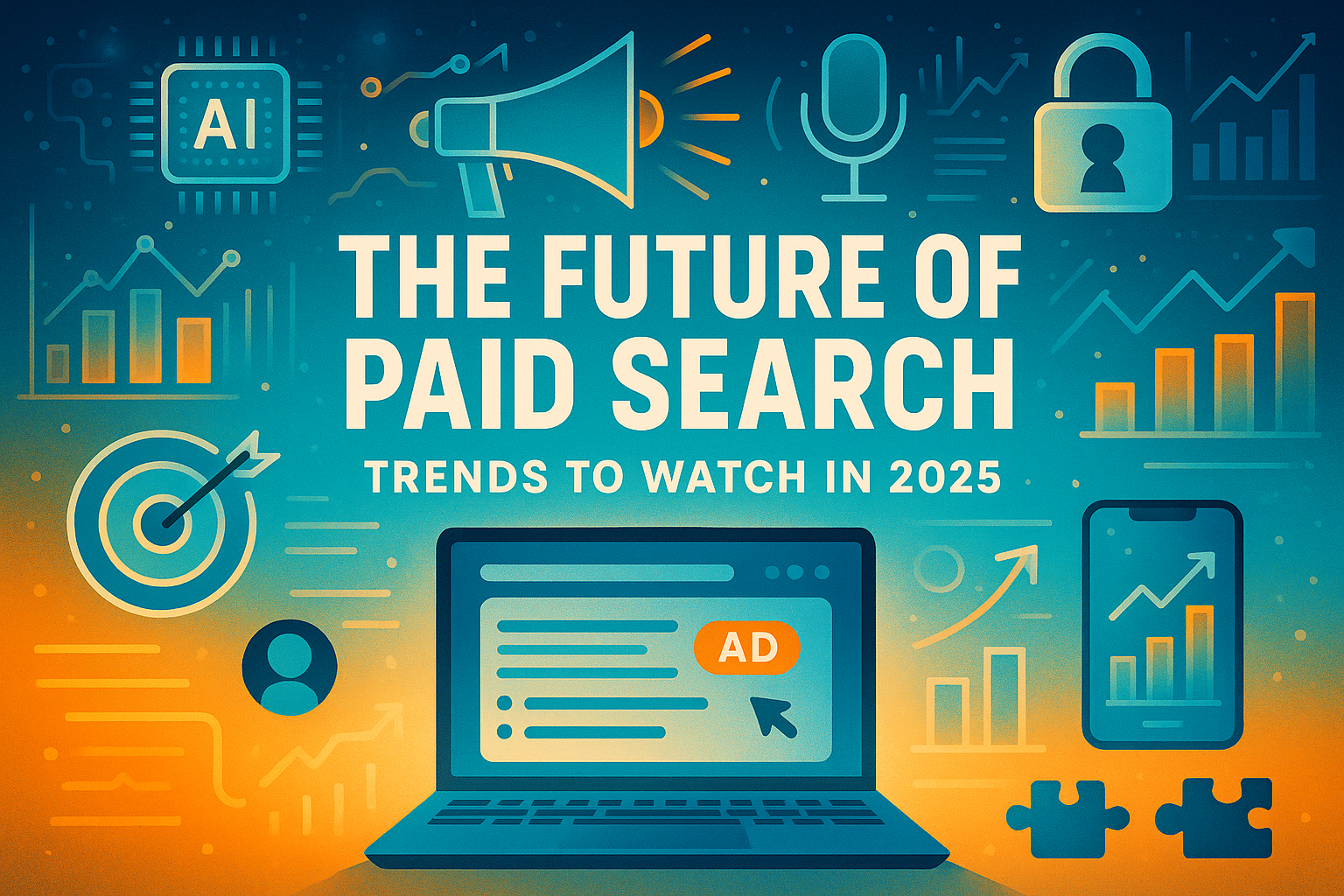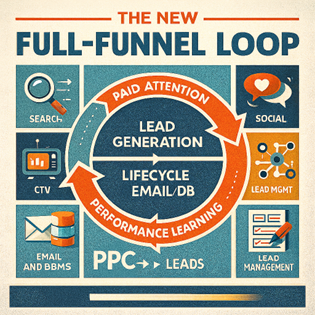As we move deeper into 2025, the world of Paid Search continues to evolve—faster than ever. Google, Microsoft, and other major ad platforms are rolling out innovations at a rapid clip. User behavior is changing. Privacy regulations are tightening. AI is becoming central to campaign management.
For marketers who want to stay competitive – and profitable – 2025 isn’t the year to play catch-up. It’s the year to lead.
Here are the key Paid Search trends every marketer should watch right now:
1. AI-Driven Campaigns Are the New Norm
If you haven’t fully embraced AI in your paid search strategy yet, you’re already behind. Platforms like Google Ads are shifting more control to machine learning systems that optimize everything—from bidding and budgeting to ad creative and audience targeting.
What you should do:
- Lean into Performance Max campaigns—they’ll dominate in 2025.
- Use responsive search ads (RSAs) and feed them strong variations to give AI something to work with.
- Leverage first-party data to improve AI’s targeting precision.
Remember: The quality of your inputs will define the performance of AI outputs.
2. Search is Becoming More Visual (and Voice-Enabled)
Text ads are no longer the only game in town. Expect to see a growing fusion of search + display + video, especially on mobile. Google is experimenting with visual layouts in the SERP, and platforms like Bing are integrating video answers and image carousels.
And let’s not forget voice search. With smart devices everywhere, queries are becoming longer and more conversational.
Your play:
- Add image extensions and video assets to your search campaigns.
- Optimize for natural language queries that reflect how people speak.
- Use structured data and schema markup to improve your visibility for voice-triggered results.
3. The End of Keywords (Sort of)
Google continues to reduce the precision of keyword match types – especially exact match. Instead, they’re leaning on intent and semantic meaning, using AI to match ads to user queries even if the keywords don’t line up exactly.
In 2025, it’s about themes, not terms.
What to do:
- Rethink keyword strategy as topic clusters, not individual terms.
- Use broad match with smart bidding—Google rewards advertisers who give its AI more room to optimize.
- Regularly review search term reports to monitor irrelevant matches and add exclusions.
4. Audience Targeting > Keyword Targeting
With third-party cookies fading out, platforms are pushing audience signals as the new holy grail. Paid search is becoming more like paid social – where who sees the ad is just as important as what they searched for.
Focus on:
- Custom segments based on user behavior, past interactions, and site visits.
- Uploading and segmenting your first-party data (e.g., CRM lists, email audiences).
- Using in-market and affinity audiences for higher conversion intent.
Think like a performance-driven media buyer, not just a keyword junkie.
5. Privacy Will Shape Performance
Regulations like GDPR, CCPA, and whatever comes next are tightening the screws on data tracking. Advertisers must prove trust to users and play by new rules to platforms. That means being ready for:
- Cookieless measurement
- Server-side tagging
- Consent management tools
Google’s Enhanced Conversions and Facebook’s Conversions API are must-haves if you want to maintain tracking accuracy and campaign performance.
Action steps:
- Audit your data and attribution setup now.
- Invest in conversion tracking that respects privacy and doesn’t rely on browser cookies.
- Be transparent with users – and offer clear value for any data you collect.
6. Local Search Is Exploding
The shift to “near me” queries and mobile-first behavior isn’t slowing down in 2025. Local search ads – especially on Google Maps and mobile SERPs – are more important than ever for service-based businesses, schools, and brick-and-mortar stores.
Don’t miss:
- Location extensions and local inventory ads
- Geo-targeted copy and landing pages
- Integrating Google Business Profiles with paid search campaigns
7. B2B Paid Search Is Having a Moment
B2B marketers are finally realizing that paid search is more than just branded clicks. With longer sales cycles, account-based targeting, and high-value conversions, search is becoming a serious channel for lead gen.
If you’re in B2B:
- Use LinkedIn audience integration in Microsoft Ads
- Focus on bottom-of-funnel keywords with high commercial intent
- Leverage lead form extensions and offline conversion tracking to tie results to revenue
Final Thoughts: What This Means for Your Marketing
Paid Search in 2025 isn’t a plug-and-play channel anymore. It requires smarter strategy, cleaner data, and closer attention to what the platforms are pushing forward.
If you’re still running the same campaigns you did in 2021, you’re leaving money – and performance – on the table.
At Weboganic, we help clients stay ahead of the curve, leveraging paid search as a full-funnel growth engine. If you’re ready to evolve your PPC strategy for what’s next, let’s talk.



